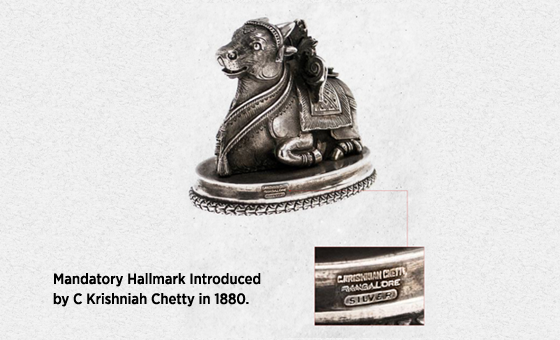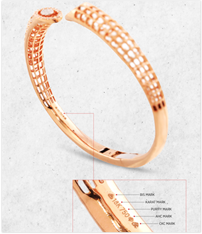Heritage of CKC :-
Our
story begins in 1869, when Cotha Krishniah Chetty, sensing the
opportunities that existed, decided to start a small enterprise in
Bangalore. It was indeed foresight on the part of our founder to
establish a fine jewellery business in the heart of the then British
Cantonment. This jewellery house would compete with the jewellers of
London, collaborate with them and learn from their stringent standards.
Jewellery for Women :-
Elevate Your Elegance with C. Krishniah Chetty Group of Jewellers
Discover a world of timeless beauty and exquisite craftsmanship with C. Krishniah Chetty Group of Jewellers. For over 150 years, we have been the trusted name in Bengaluru, adorning women with enchanting jewellery pieces that narrate tales of tradition and modernity. Our jewellery for women transcends generations, blending classic designs with contemporary sensibilities. From intricately designed necklaces to delicate bangles, each piece reflects our commitment to quality and craftsmanship. Our wide range caters to every occasion, whether it's a casual brunch or a grand soirée. With a legacy that speaks for itself, we understand the essence of making every woman feel special. Our jewellery is not just an accessory; it's an expression of your individuality. Whether you prefer traditional gold or the sparkle of diamonds, we have something for everyone.
Indulge in the magic of C. Krishniah Chetty Group of Jewellers and adorn yourself with pieces that reflect your unique style and the timeless tradition of Bengaluru.
Bridal Jewellery for Women :-
Eternal Splendor: Bridal Jewellery by C. Krishniah Chetty Group of Jewellers
Your wedding day is a celebration of love, and your bridal jewellery should be nothing short of extraordinary. C. Krishniah Chetty Group of Jewellers, with a rich legacy spanning over 150 years, understands the significance of this special day. Our bridal jewellery collection is a masterpiece of craftsmanship and artistry. Each piece is designed to make you feel like a queen on your wedding day. From intricately designed necklaces that grace your neck to sparkling bangles that adorn your wrists, every detail is a testament to our commitment to perfection.
We offer a range of designs that cater to both traditional and contemporary tastes. Whether you dream of a classic gold ensemble or desire the brilliance of diamonds, our collection has it all. Our bridal jewellery is a reflection of the timeless tradition and grandeur of Bengaluru, making your special day even more memorable. Choose C. Krishniah Chetty Group of Jewellers for your bridal jewellery and make a statement that lasts a lifetime.
Jewellery for Men :-
Timeless Elegance: Men's Jewellery by C. Krishniah Chetty Group of Jewellers
For men who appreciate the finer things in life, C. Krishniah Chetty Group of Jewellers presents a collection of jewellery that combines tradition with modernity. With a legacy of trust spanning over 150 years, we offer jewellery that complements your style and individuality. Our men's jewellery range includes classic designs like gold chains and rings, as well as contemporary pieces that incorporate diamonds and gemstones. Each piece is meticulously crafted to exude sophistication and charm. Whether you're dressing up for a formal event or adding a touch of elegance to your everyday attire, our jewellery is designed to make a statement.
At C. Krishniah Chetty Group of Jewellers, we understand that jewellery is not just an accessory; it's an extension of your personality. Our collection reflects the rich heritage of Bengaluru while embracing the evolving tastes of the modern man. Experience the timeless elegance of men's jewellery with C. Krishniah Chetty Group of Jewellers and redefine your style with every piece you wear.














